Disease management decisions in low-income year(s)
Several steps must all be done correctly for fungicide sprays to be most effective. Missing one step can severely limit the outcome (and cost the grower a lot of money). Continue reading
Your source for orchard news & information in the Sacramento Valley


Several steps must all be done correctly for fungicide sprays to be most effective. Missing one step can severely limit the outcome (and cost the grower a lot of money). Continue reading
Almond variety and rootstock selection is a quarter century investment. Evaluating the compatibility of different varieties and rootstocks together is critical to deciding whether a combination will be successful. Continue reading
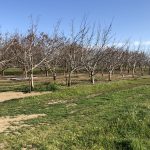
Read this article for walnut orchard management tasks to keep in mind in April. Continue reading
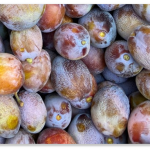
A prune grower’s potassium (K) program can be one of the most critical components of an orchard management plan. Read for more considerations when making a potassium plan. Continue reading
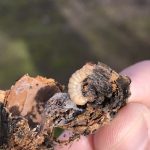
When more NOW larvae make it through the winter, more egg laying will occur next season regardless of what else you do. If you have scarce dollars to spend on NOW control, spend them this winter when they will do the most good in a sanitation program. Continue reading
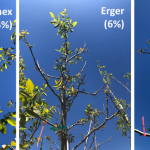
For three winters, we have been studying the impact of a number of dormancy breaking treatments to give growers tools to deal with low chill winters. This previous winter-spring, we put Dormex at 2% and 4% head-to-head. Continue reading
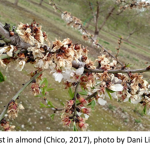
Pseudomonas syringae pv. syringae is ubiquitous in orchards, so bacterial blast can develop whenever environmental conditions are right (freezing or near-freezing and wet). While copper sprays have been used to protect trees from bacterial blast, resistance is common in P. syringae populations throughout the state. Unfortunately, it is no longer effective for controlling bacterial blast in some orchards, however, Kasumin® 2L has been shown to be effective. Continue reading
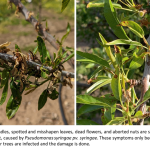
In 2023, the cold, wet weather during bloom and leaf-out resulted in bacterial blast damage in many Sacramento Valley almond orchards. If conditions this year are cold and wet during bloom, we may see a recurrence of blast: make a plan now to keep blast damage to a minimum. Continue reading
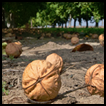
If you haven’t already, look at your orchard operation: take some time to Stop, Think, Observe, and Plan. Read for an overview on resources on topics on spray calibration, sanitation, codling moth mating disruption, pests, and more. Continue reading
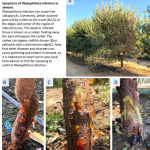
Excessive water, caused by rain, flooding, or even overirrigation, is a challenge for orchards and can cause two very different problems: waterlogging and Phytophthora infection. Given that we had bountiful rain this winter and orchards with standing water were common, continuous monitoring and collaboration with your PCA or farm advisor will be increasingly valuable. Continue reading
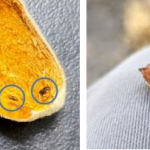
Winter sanitation is becoming increasingly important. This past year many growers in the Sacramento Valley experienced levels of navel orangeworm (NOW) damage not seen since the early 1980s. A successful winter sanitation can reduce damage from NOW and other almond-eating pests, like the Carpophilus beetle. Continue reading
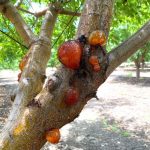
Pytophthora was detected as early as mid-February in Fresno County and reported statewide by the early summer of 2023. Almond growers should be prepared to respond to strengthening El Niño conditions and the possibility of a recurring outbreak of aerial Phytophthora. Read for insights about the disease symptoms, the pathogen biology, as well as some management guidelines for this relatively rare but serious disease of almond. Continue reading
Maintaining income in a low-price year will require growing a large, high-quality crop. Continue reading
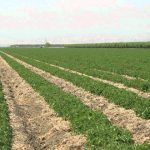
There are some concerns about growing tomatoes on old walnut ground, but very little formal research exists in this area. Continue reading
Becky Wheeler-Dykes, UCCE Farm Advisor Glenn, Tehama and Colusa Counties Luke Milliron, UCCE Farm Advisor Butte, Glenn, and Tehama Counties With the recent good prices, many growers with prune orchards at the end of their productive lifespan are opting … Continue reading